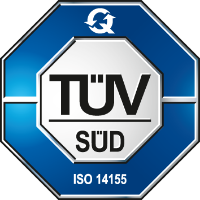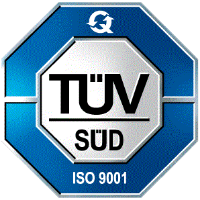Everyone is talking about new regulation for medical devices – what is going on?
The new Medical Devices Regulation (2017/745/EU) (MDR) adopted in May 2017, will replace the existing Medical Devices Directive (93/42/EEC) (MDD) and the Active Implantable Medical Devices Directive (90/385/EEC) (AIMDD).
The publication of the MDR in May 2017 marked the start of a 3 year period of transition from the MDD and the AIMDD. During the transition period the Regulations will come into force gradually, starting with provisions related to the designation of Notified Bodies and the ability of manufacturers to apply for new certificates under the Regulations.
To avoid market disruption and allow a smooth transition from the Directives to the Regulations, several transitional provisions are in place. Some devices with certificates issued under the Directives may continue to be placed on the market until 27 May 2024, and made available or put into service until 27 May 2025.
Certificates delivered by Notified Bodies under the MDD will remain valid until their date of validity or for a maximum of 4 years (and until 27 May 2024 at the latest, except for some exceptions described in MDR.
Direct changes to the Healthcare professionals and health institutions
In general, no requirements from the Directives (MDD and AIMDD) have been removed; the Regulations (MDR) add new ones. Compared to the current Directives, the new Regulations enforce a life-cycle approach to safety, backed up by clinical data.
Some of the new key requirements in the Regulation of specific importance are specified here;
- Change of risk classification and scope of regulation: The classification of medical devices into four classes (Class I, IIa, IIb, III) remains, but the MDR reclassifies certain devices and has a wider scope.
- Clinical investigation: The rules for conducting Clinical Investigations has been enforced. The new rules describe clearly how these investigations shall be designed, notified and/or authorised, conducted, recorded and reported. The obligations are clearly described what it means being a sponsor or taking part in clinical investigations.
- Traceability: For Class III implantable devices, health institutions shall store – preferably by electronic means – the Unique Device Identifiers (UDIs) of the devices they have supplied, or with which they have been supplied. The UDI will be a barcode, a QR code or any other machine-readable code. This will enhance the identification and traceability of devices and the effectiveness of post-market safety-related activities through targeted field safety corrective actions and better monitoring by competent authorities. Economic operators (manufacturers, authorised representatives, importers and distributors) shall be able to identify any health institution or healthcare professional to which they have directly supplied a device.
These changes could have consequences for the availability of medical devices for health institutions. For instance, manufacturers may choose to stop the production of certain medical devices due to the increased cost to fulfill the requirement. Furthermore, if certain medical devices do not get their certificates on time these products may become temporarily unavailable.
Indirect change leading to increased need for clinical evidence
The MDR enforce a strengthening of the understanding of the use of the concept of basing the CE certification on clinical data from an equivalent product. Previously under the MDD it has been possible to use clinical evidence from literature alone describing presumed equivalent products. This is specially for high risk class products (class III) and other implants no longer possible except when there is a direct access to the technical documentation of the claimed equivalent product-, either manufacturers own product or another manufacturer. For other devices the manufacturer shall duly substantiate in the technical documentation, why the results of non-clinical testing methods alone, including performance evaluation, bench testing and pre- clinical evaluation, is to be considered as adequate.
Additionally for devices already on the market the manufacturer need to demonstrate that the existing clinical evidence is of sufficient amount and quality meaning that the existing data are collected according to the MDR (and the ISO 14155 guidance) using the relevant device of concern within the intended and indication for use following a solid statistical rationale and that are supporting the manufacturers claim.
This will mean that there is a risk that a majority of the medical devices on the European markets during the regulatory conversion from the Medical Device Directive into the new regulation are considered by the Authorities and Notified Bodies not to have enough clinical evidence to support the placement on the market any longer.
It has been mentioned by a Notified Body that up to 80% of all existing medical devices will need new clinical data based on clinical investigations.
Thoughts about the (near) future…
The transit period ends next year May 26th 2020. Following this manufacturers, that has extend their CE certificates under the MDD, has the following grace period until expiry of their certificate or latest until May 2024 to produce the clinical evidence needed to support their product claims and keep the device on the market under then the MDR.
The need for clinical evidence and data are going to be massive! It is important to remember that these regulatory investigations are not necessarily considered by the healthcare professionals and institutes to contribute to the research related activities that are a common objective.
The requirements to the process collecting data of sufficient amount and quality under a clinical investigation and the stakeholders responsibility is clearly phrased and enforced in the new text in the MDR.
It is going to be crucial to establish efficient processes and focused regulatory objectives to collect the evidence necessary to keep the existing devices on the market which is used in every day treatment of patients and which is of risk of not being able to comply with the MDR. This is only done by involving both manufacturers and healthcare professionals and institutes.
At Qmed we are following the development in this process closely to adapt to the new requirement and processes that would need to be established. Keep an eye out for our Newsletter and at our homepage for more information.



